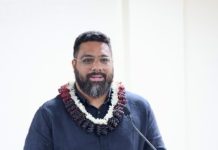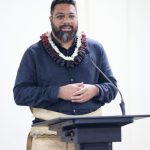Governments resume negotiations Monday at the United Nations in New York to finalise a new High Seas Treaty to ensure the conservation and sustainable use of marine biodiversity of areas beyond national jurisdiction.
The two-week Intergovernmental conference is taking place from 20 February to 03 March 2023 and is a resumption of negotiations from August 2022, when governments ran out of time.
Covering half of the planet, the High Seas support vibrant marine ecosystems, life that is vital to the global food supply, and the planet’s climate system. However, it has been plagued by poor or patchy governance, and with only 1.2 percent protected, vast High Seas areas are open to unsustainable exploitation.
This new treaty aims to address these shortcomings and offers a historic opportunity to put in place game-changing new measures for the ocean, including establishing highly and fully protected areas and strengthening assessment and management of human activities.
The recent global commitment to protect at least 30 percent of the ocean by 2030 (the “30×30” goal) offers an ambitious backdrop for ensuring this new treaty provides the legal tools to turn the target into a reality.
The pressure is now on governments to ensure the treaty that is finally agreed upon will be ambitious enough to result in a healthy ocean rather than a degraded one.
Key issues that still need to be addressed at the meeting include: measures to ensure that the new treaty can deliver effective new marine protected areas rather than “paper parks”; safeguards to avoid harm arising from human activities affecting the high seas and the deep seabed; a strong institutional framework to ensure effective implementation and compliance; decision-making rules to avoid enabling one or two countries to block progress; and critical finance and equity issues related to capacity building and the sharing of benefits from marine genetic resources.
“We came frustratingly close to getting this treaty over the line in August at what was supposed to be the final round of negotiations. With the accelerating climate and biodiversity crises, time is not a luxury we have to put ocean health back on track,” said Sarah Bevis from the High Seas Alliance.
“This time round we need to seize the moment and get an ambitious treaty over the finish line, so we can roll up our sleeves and work on the crucial tasks of getting the treaty ratified and implemented”.
Dr Laura Meller, Oceans Campaigner and Polar Advisor, Greenpeace Nordic said: “The oceans support all life on Earth. Their fate will be decided at these negotiations. The science is clear. Protecting 30 percent of the oceans by 2030 is the absolute minimum necessary to avert catastrophe. It was encouraging to see all governments adopt the 30×30 target last year, but lofty targets mean nothing without action.”
“This special session taking place so soon after the last round of negotiations collapsed gives us hope. If a strong Treaty is agreed on the 3rd of March, it keeps 30×30 alive. Governments must return to negotiations ready to find compromises and deliver an effective Treaty. We’re already in extra time. These talks are one final chance to deliver. Governments must not fail.”
Trevor Jones, Campaign Manager, Only One said: “Without protections for the high seas, we cannot hope to have a healthy ocean, and without a healthy ocean we put marine life, coastal livelihoods, and global food stability at grave risk. Millions of people from around the world have spoken out: They want a strong High Seas Treaty, and they’re counting on their leaders to finally get the job done.”
Liz Karan, Director of Pew’s Ocean Governance Project said: “The high seas support diverse marine life and unique ecosystems critical to the health of our ocean and planet. Countries must seize this opportunity to finalise a robust high seas treaty to establish highly protected, cross sectoral high seas MPAs for the benefit of current and future generations”.
Jennifer Morris, CEO of The Nature Conservancy said: “Ensuring legal protection for the vast areas of open ocean beyond national jurisdiction, and actively acknowledging the importance of addressing this situation, is a pivotal step in moving toward our ambitious ‘30×30’ target in the new UN Global Biodiversity Framework. Ensuring a successful outcome from the New York negotiations, in the form of a formally agreed and legally binding High Seas Treaty, is imperative to meet the collective commitment to conserve 30 percent of the Earth’s ocean this side of 2030.”
Gladys Martínez, Executive Director de la Asociación Interamericana para la Defensa del Ambiente (AIDA) said: “The high seas urgently needs a governance framework. We look forward to states concluding a strong and ambitious treaty during these two weeks.”
Fabienne McLellan, Managing Director OceanCare said: “We have high hopes that governments will find a way to finalise the High Seas Treaty during the resumed session of IGC 5. Countries must understand that it would be grossly negligent to once again fail to conclude an agreement to conserve marine diversity in areas beyond national jurisdiction. The climate and biodiversity crises are in full swing, and the ocean is our ally, not an infinite resource to be exploited. It is not only important that the Agreement is finalised, but what is agreed needs to make a tangible difference in protecting biodiversity. Against this backdrop, it is difficult to imagine that no agreement will be reached – the agreement is vital for marine biodiversity, a healthy ocean and thus also for us humans” .
SOURCE: HIGHSEAS ALLIANCE/PACNEWS














